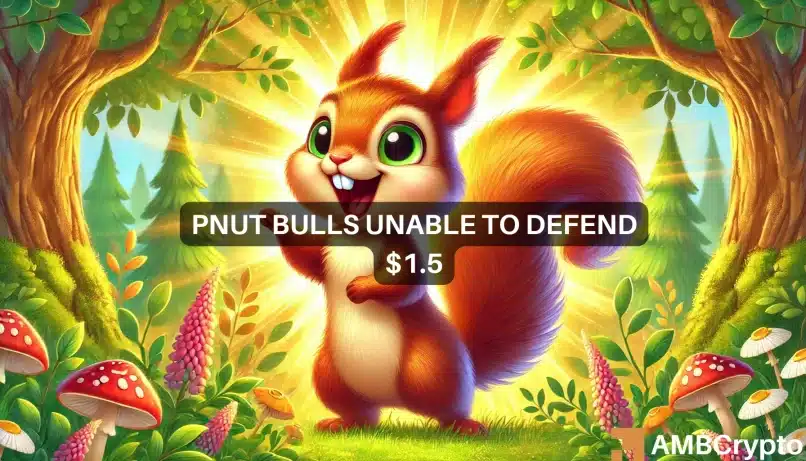Analyzing Peanut Price Movement: Testing $1 Resistance Level After 50% Retracement
Recently, Peanut the Squirrel [PNUT] experienced a rapid rally which has now started to stabilize after a period of decline. Traders are closely monitoring the critical levels of $1.5 and $1, with the former now acting as a support level.
Market sentiment has been largely positive, especially as Bitcoin [BTC] approached the $97k mark with the potential of reaching $100k. While Bitcoin may continue to rise, there are concerns that PNUT could undergo a retracement phase in the near future.
Peanut Squirrel Sees Pullback to 50% Retracement Level
Looking at the 4-hour chart, PNUT’s momentum has slowed down. Bulls fought hard to maintain the $1.5 level since mid-November, but a week-long bearish pressure eventually pushed prices lower.
The Fibonacci retracement levels indicate $1.29, $1, and $0.6 as crucial support levels for those interested in purchasing Peanut-themed assets. The Relative Strength Index (RSI) on the 4-hour chart dropped below 50, signaling momentum favoring the bears.
This development suggests a potential downtrend towards $1 and even $0.6. The On-Balance Volume (OBV) aligns with this prediction, as it failed to stay above recent lows, indicating increased selling pressure and a higher likelihood of a retracement to $1.
Market Speculation Faces Short-Term Bearish Trends
The decline in spot Cumulative Volume Delta (CVD) over the past week hints at weakening demand in the spot market. This, coupled with decreasing funding rates and a drop in Open Interest from $318 million to $261 million in four days, indicates a shift towards seller bias.
Collectively, these factors point towards a lack of strong bullish sentiment in the short term. Despite Bitcoin’s climb towards $100k, the gradual decline in PNUT’s value suggests that speculators are cautious about taking long positions.
Disclaimer: The opinions expressed in this analysis are personal views and should not be taken as financial advice.

